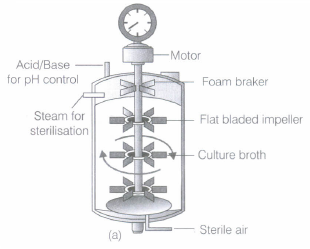CBSE 12th Standard Biology Subject Biotechnology Principles and Processes Ncert Exemplar 2 Marks Questions 2021
By QB365 on 25 May, 2021
QB365 Provides the updated NCERT Examplar Questions for Class 12 Biology, and also provide the detail solution for each and every ncert examplar questions , QB365 will give all kind of study materials will help to get more marks
QB365 - Question Bank Software
CBSE 12th Standard Biology Subject Biotechnology Principles and Processes Ncert Exemplar 2 Marks Questions 2021
12th Standard CBSE
-
Reg.No. :
Biology
-
A plasmid DNA and a linear DNA (both of the same size) have one site for a restriction endonuclease. When cut and separated on agarose gel electrophoresis, plasmid shows one DNA band, while the linear DNA shows two fragments. Explain.
(a) -
While carrying out a PCR, 'denaturation' step was missed. What will be its effect on the process?
(a) -
What is meant by gene cloning?
(a) -
You have created a recombinant DNA molecule by ligating a gene to a plasmid vector. By mistake, your friend adds exonuclease enzyme to the tube containing the recombinant DNA. How will your experiment get affected as you plan to go transformation now?
(a) -
Give the name of the type of bioreactor shown. Write the purpose for which it is used.
 (a)
(a)
2 Marks
*****************************************
CBSE 12th Standard Biology Subject Biotechnology Principles and Processes Ncert Exemplar 2 Marks Questions 2021 Answer Keys
-
This is because plasmid is a circular DNA molecule. When cut with enzyme, it becomes linear, but does not get fragmented.
Whereas, a linear DNA molecule gets cut into two fragments. Hence, a single DNA band is observed for plasmid while, two DNA bands are observed for linear DNA in agarose gel. -
1. If denaturation step is missed, the two strands of DNA will not be separated.
2. The primers will not be able to anneal to the template and hence, no extension of the DNA will take place. -
Formation of multiple copies of a particular gene is called gene cloning. A gene is separated and ligated to a vector like plasmid. The recombinant plasmid is introduced into a plasmid free bacterium through transformed bacterium through transformation. The transformed bacterium is made to multiply and form a colony. Each and every bacterium of the colony has a copy of the gene.
-
The experiment will not likely to be affected as recombinant DNA molecule is circular closed, with no free ends. Hence, it will not be a substrate for exonuclease enzyme which removes nucleotides from the free ends of DNA.
-
The given bioreactor shown in the figure is the simple stirred-tank type bioreactor.
Its purpose is large scale production of recombinant protein or enzymes, using microbial plants, animals and human cells.
2 Marks






































